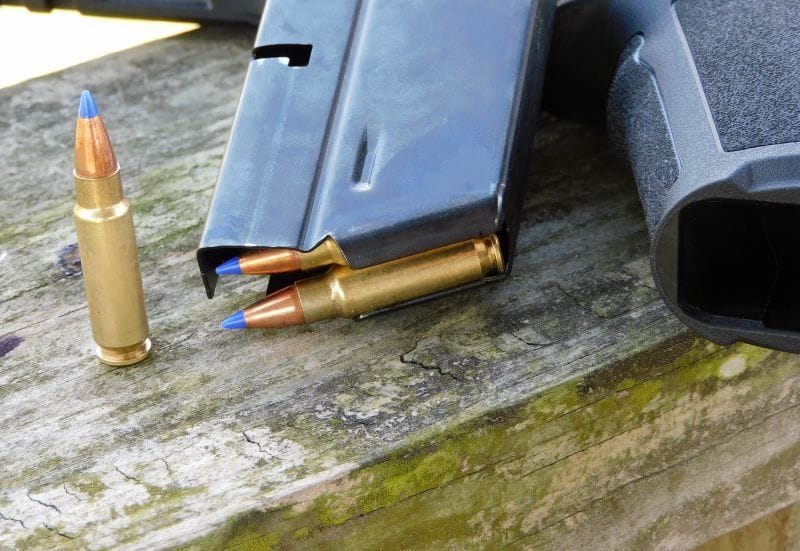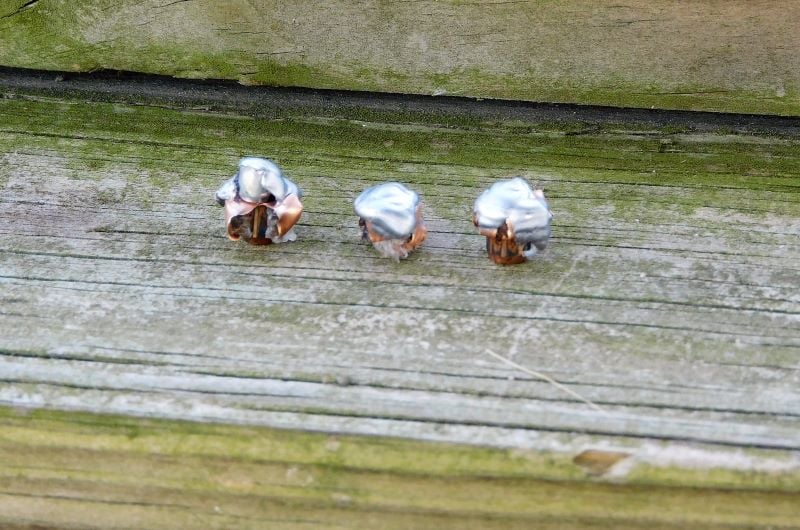Fabrique Nationale Herstal offers a few different commercial loads for their FN 5.7×28 cartridge. This includes a 40-grain full metal jacket load, a lead-free 27-grain option, as well as a 40-grain V-Max. The V-Max load, designated by FN as the SS197SR, is FN’s entry into the sporting cartridge market for the 5.7. Whether you have a 5.7 carbine or pistol for either personal protection or game-getting, this load is worth a look.

FN 5.7×28 V-Max
The Hornady V-Max bullet has been on the market for years and it stands as a preeminent varmint offering. The V-Max is a light-for-caliber spitzer bullet with a polycarbonate tip. The tip is designed to wedge the lead core of the bullet and promote rapid expansion at rifle velocities. The tip also aids in making the round more aerodynamic. The V-Max is available in rimfire rifle rounds like 17 HMR and 22 Magnum, but it is also available in a number of centerfire rifle cartridges from 17 Hornet to 300 Blackout. The FN 5.7×28 SS197SR uses a .22 caliber 40-grain V-Max bullet with a blue tip. The rounds are brass-cased and come in packages of 50 rounds.
Velocity Test
The FN V-Max load looks to be an excellent close-in varmint load, especially when paired with any number of light handy rifles like the Ruger PC Carbine. But the 5.7 is known as a hotrod, even when fired from a shorter pistol barrel. I loaded up some of the V-Max load in my 5.25-inch barreled PSA Rock and did some informal shooting before setting up my Caldwell chronograph to get some velocity data.
From a distance of 10 feet, I fired five rounds over my chronograph for an average velocity of 1798 feet per second. Like other 5.7×28 loads, the FN V-Max load is hot, but also consistent. The extreme spread from lowest velocity reading to highest velocity reading was only a difference of 44 feet per second.
There is a tendency to compare the 5.7 to conventional pistol ammunition, although the 5.7’s high velocity allows it to do things other loads cannot do. But I found myself comparing the readings I saw with one of my favorite rifle rounds, the .22 Magnum. The .22 Magnum pushes a round-nosed 40-grain bullet at an advertised velocity of 1875 feet per second. Out of a handgun, the .22 Magnum loses a lot of its punch, but many will opine that the .22 Magnum is less expensive and just as good as the 5.7. The difference, however, is huge. The FN load comes close to rivaling the .22 Magnum. But we are getting those near-rifle readings from a handgun.
FN 5.7×28 V-Max Ballistic Gel Test
To see how the FN 5.7×28 V-Max load does on target, I set up two blocks of 10% Clear Ballistics gelatin blocks fronted by four layers of denim to shoot at. The blocks roughly simulate muscle tissue, while the denim represents heavy clothing. While it should still be stated that the FN V-Max would do well as a varmint load, even out of a pistol, one has to ask how it might perform if put into the role of personal protection. This medium does allow some comparability across different rounds, regardless of its intended role.

I fired four rounds of the FN V-Max load from a distance of 10 feet into the gelatin blocks. One round favored high and exited the block at the top. Three more hit the blocks squarely. Each of these rounds expanded and stretched the first gelatin block, with canals spanning roughly one inch in diameter running from the 2-7 inch mark. It was at this point that each round shed some small copper and lead fragments as well as the blue tips that had done their jobs.

The expanded projectiles continued on a straight path, rather than tumbling like unexpanded 5.7 bullets would. These behaved visually similar to conventional pistol rounds. One round stopped at 12 inches. Another at 13. The last came to rest at 15.25 inches of penetration.

The recovered projectiles were heavily mangled but there was no separation of the jacket from the lead core. All retained much of their weight during their journey. Expansion was excellent. The round that stopped at 12 inches expanded the greatest with a final diameter of .343 inch.
Parting Shots
When it comes to ammunition selection, whether it is for target work, hunting, or personal protection, no one type of ammo can rule them all. That is why we tend to favor different firearms and different cartridges for a given task. The 5.7 is one of those rounds developed for martial use that has gotten some use in other roles. It is also one of those rounds developed for rifles that survived the performance jump down to handguns.
While it is always best to tailor the ammo to the task at hand, if you are looking for a jack of all trades for the 5.7×28, the SS197SR load is hard to beat. Out of a handgun, this load is reliable, consistent, and blisteringly hot. It delivers moderate damage and the projectiles are tough enough to hold together and penetrate deeply. While we did not test the load out of a rifle, the V-Max pushed at even higher velocities would only result in more dramatic damage than a good varmint hunting load needs to have.

